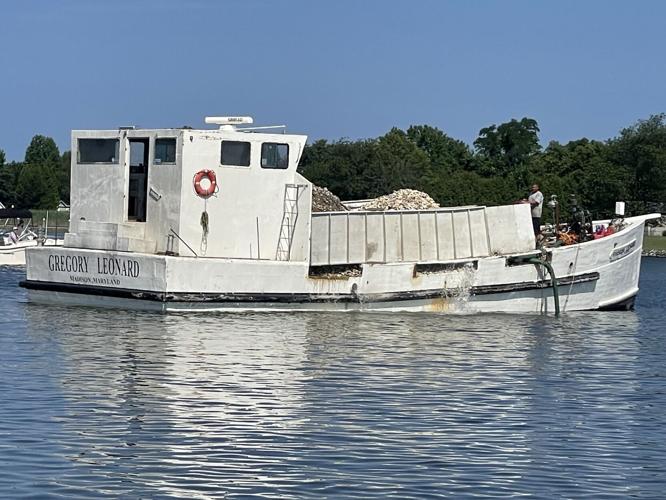WYE RIVER — A small but mighty group of citizens, friends and neighbors dedicated to the preservation of the Chesapeake Bay, Wye River Oyster Program volunteers raised donations to plant 21 million spat-on-shell oysters to cover three acres of the Wye River bottom June 29.
Focusing hyper local efforts, the Wye River Oyster Program is a non-profit, community initiative to restore oyster populations in the local Wye River.
The Chesapeake Bay is “the only water system like it in the world,” and residents who live on the water are a unique community, regularly sharing information about the water and its resources, organizer Steve Burleson said.
Dedicated to the preservation of the watershed, the ball began rolling about a year ago, according to Burleson, when citizens gathered to see what additional initiatives could be done to further restoration efforts.
While conservancy groups are invaluable in education and advocacy, Wye River Oyster Program volunteers sought to have more direct and local impacts and discovered the Wye River as an oyster sanctuary right in their own backyard.
With little more than an idea and a talking point, the Wye River Oyster program hatched, with all-volunteer efforts ensuring 100% of donations go toward purchase of spat on shells, he said.
“This way we know exactly where the money is going,” he said.
Every little bit helps, especially with the growing uncertainty of federal funding, he noted.
Primarily through word of mouth with other water enthusiasts, Wye River Oyster Program quickly raised money to partner with Ricky Fitzhugh of Seed to Shuck Ventures, and cover three acres of the Wye River bottom.
Based in Cambridge, Seed to Shuck’s hatchery spawns new oyster larvae for spat on shell production and restoration projects on the Bay.
Seed to Shuck is an active partner with federal and state agencies, conservation organizations and watermen to plant new growth in oyster sanctuaries, public fisheries and private leases in Maryland and Virginia.
Each canister is home to approximately 675 bushels of oysters and the initiative planted three canisters, which makes up one barge, Burleson said.
According to Maryland Department of Natural Resources (DNR) estimates, about 15% of spat on shell grow to market size, and the DNR has been incredibly supportive of the initiative, he said.
An essential aspect of an entire ecology, oysters naturally filter pollutants and excess nutrients in the water and their reefs help restore submerged habitat, providing shelter and breeding grounds for a variety of marine life, according to Burleson.
By restoring oyster beds to historic areas, the Wye River Oyster Program aims to achieve significant improvements to the water quality of the Wye River for the benefit of the community and the ecosystem of the Chesapeake watershed.
Community interest throughout the entire initiative has been highly engaging, and supportive, Burleson said.
Several boats with numerous volunteers and river enthusiasts took to the water to watch the planting Sunday, June 29. The shell is washed off the boat onto the waiting river floor below the surface.
The Wye River Oyster Program seeks to make plantings an annual tradition and encourage more neighboring rivers to join in initiatives to locally support their waterways, according to Burleson.
The Wye River Oyster Program Fund is a non-profit of the Mid Shore Community Foundation.
More information about Seed to Shuck Ventures can be found at .













(0) comments
Welcome to the discussion.
Log In
Keep it Clean. Please avoid obscene, vulgar, lewd, racist or sexually-oriented language.
PLEASE TURN OFF YOUR CAPS LOCK.
Don't Threaten. Threats of harming another person will not be tolerated.
Be Truthful. Don't knowingly lie about anyone or anything.
Be Nice. No racism, sexism or any sort of -ism that is degrading to another person.
Be Proactive. Use the 'Report' link on each comment to let us know of abusive posts.
Share with Us. We'd love to hear eyewitness accounts, the history behind an article.